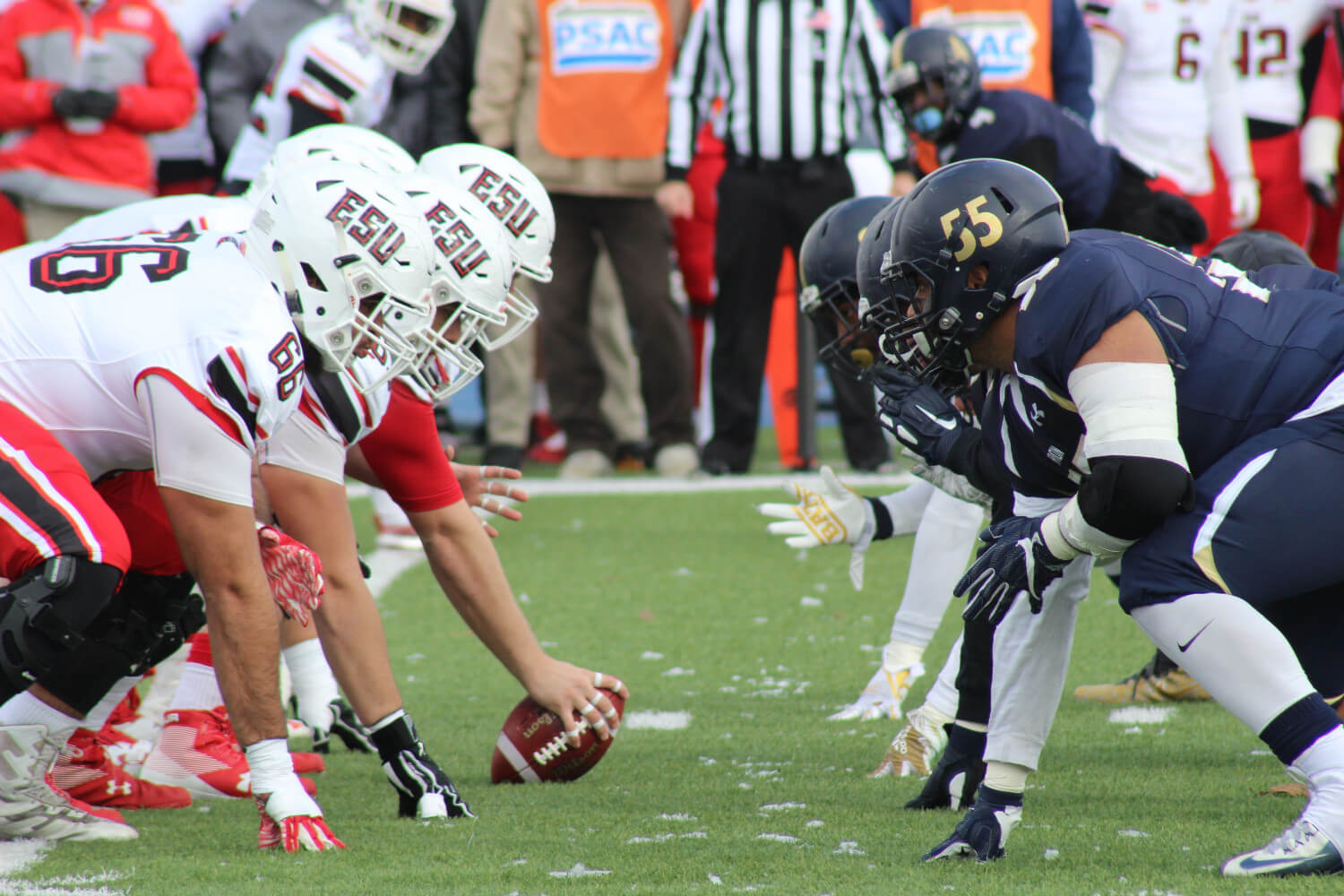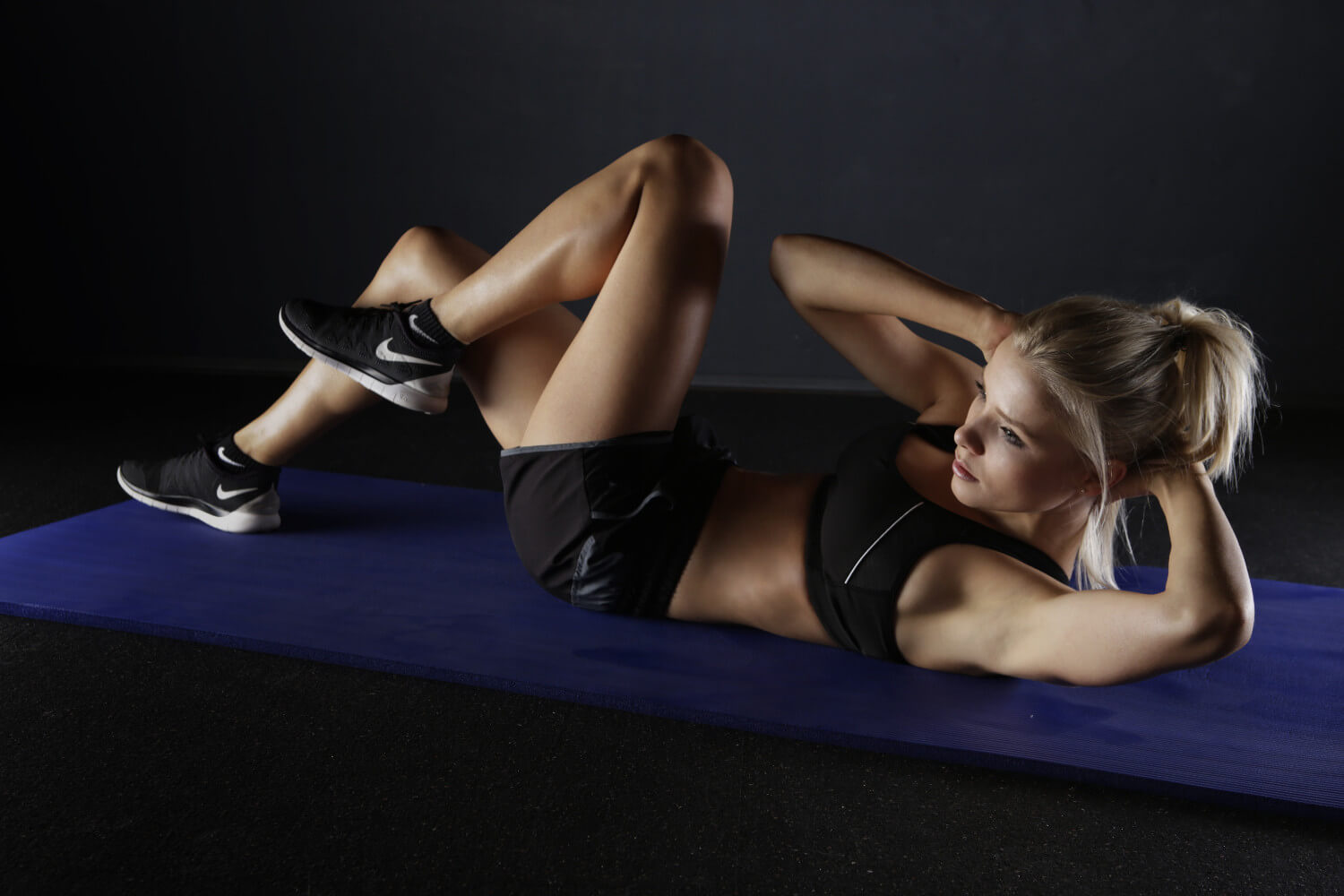
One of our favorite times of the year at my facility is when our
college football sessions begin in May. What makes our job unique when
it comes to this 12-week program is our near absolute control over what
Mike Robertson and Patrick Ward call the athletes’ stress bucket. When
these guys come to train, there’s no external stress. Aside from a
girlfriend and a landscaping job, their lives are a piece of cake. And
it shows every day during the warm-up. We simply cannot get them to shut
up (a very simple way to determine their level of central fatigue or
lack thereof).
What do I mean when I say we control their level of stress? To
today’s physical preparation coaches, the figure below is nothing new,
but it demonstrates how we truly are the organisms’ stress managers over
the course of the summer. We structure our athletes’ training around
the General Adaptation Syndrome (GAS) by the day, by the week, and by
the month. Seems simple enough, right? Apply a stimulus to the point of
fatigue and watch the athlete recover and supercompensate leading to the
next training session.
Wrong. In reality, each athlete has his own GAS, if you will.
Different positions (lineman, receiver, etc.) require not only different
stressors but also varying levels of intensity and volume. Our program
fills the need for the application of unaccustomed stress. I believe
this system is the ultimate guide for building today’s American football
player.
The Summer Macrocycle
Before we dive into the daily training sessions, let’s look at a
10,000-foot view of the whole program for the three months we have these
guys in-house. Let it be known, I in no way consider myself a
“programming sensei,” I simply try to instill what others much smarter
than I have found successful.
At first glance, you’re probably rolling your eyes with the
assumption that there are too many moving pieces to this puzzle. It is
much simpler than it appears. I like to refer to it as Modified Block Periodization
where we’re linearly building athletic movement, meaning triphasic,
concurrently raising all aspects of athleticism, all while respecting
residual training effects (aerobic endurance, maximal strength, maximal
speed, etc.). The big picture is nothing more than transitions from slow
to fast, general to specific, and simple to complex using legend Al
Miller’s suggested prescription of volume first, intensity second.
Mesocycle One
When the session begins in early May, some of the guys have been
keeping up on their training since the end of spring ball while others
have kept up with Call of Duty and Taco Bell. With that in
mind, we adhere to the least common denominator and take everyone
through two weeks of anatomical adaptation.
The benefits of this period are two-fold:
- It raises work capacity.
- It increases resiliency in the connective tissue while preparing the
players for the more violent demands to come, i.e. sprinting.
Our speed work for the four weeks focuses on starts from a static
position and is incredibly simple. Our go-to is two-point starts with
the emphasis on front side arm mechanics and, most importantly, posture.
We also emphasize posture, rhythm, and relaxation through extensive
tempos during this block. In the weight room, we want the speed of the
barbell to maintain relatively high speed. We are constantly cueing the
guys to “rattle the plates,” as athletic movement starts from the ground
up.
The first four weeks is a fan favorite (sarcasm) as we employ slow
eccentrics to the main movement in the weight room, and we perform them
in a cluster fashion. I would be remiss if I failed to mention that Cal
Dietz and his work greatly influenced the resistance portion of our
training session.
The goals of the eccentric phase, or block, are:
- To reach a level of hypertrophy necessary for the sport’s violent demands.
- To improve neuromuscular synchronization of the afferent/efferent
pathways between the muscle spindles and central nervous system and
desensitizing the Golgi tendon organ (GTO), which will then allow the
organism to absorb high levels of force all while not triggering the
over protective mother (GTO).
The only problem with eccentrics? They’re extremely stressful to the
organism, which is why we use cluster sets during this block. Clusters
are phenomenal for performing each rep at or near maximal velocity
during the movement’s concentric contraction. This results in maximal
power output, ultimately leading to greater improvements over time.
If you’re familiar with Coach Joe Kenn, you are without a doubt
acquainted with his Tier System Strength Training template. I’ll explain
why we implement it later in the article. For now, know our focus is on
hypertrophy (“R” for repetition effort, or in our case, slow eccentrics
and time-under-tension), then max effort, followed by a dynamic
movement which could be a jump, throw, or use of accommodating
resistance.
As for jumps during this block, we’ve had tremendous success with max
effort, single response jumps. More specifically, static overcome by
ballistic jumps (seated box jumps) with knee bends of at least 90
degrees to mimic the start of the acceleration phase.
Mesocycles Two and Three
June
As we progress further into the summer, the program becomes more
demanding. The emphasis continues to center on the one biomotor ability
that separates the terrible from the bad, the bad from the good, and the
good from the great: speed. From a bioenergetic standpoint, we focus on
alactic power rather than capacity. Why? It does not matter how many
times a guy can run a 5-flat forty, he’s still slow. We find it more
prudent to start building a Ferrari rather than a Ford Bronco.
As far as biodynamics are concerned, we begin to push the alactic envelope with longer accelerations and sprints. A staple in our program is flying 10’s (build 30, sprint 10) and medicine ball starts with great awareness on the height of their hips and their front side mechanics.
The fun part for my staff and me during this block is to witness the athletes realizing that as their speed increases, they’re able to generate more force with each ground contact. It’s even more rewarding to explain that the challenge they face as speed increases is that there’s less time available to apply force. A cue that’s worked time and time again for us is, “The only difference between flying and sprinting is ground contact.”The only difference between flying and sprinting is ground contact. Click To Tweet
Once they meet the sprinting requirements, they transition to the
weight room with isometrics as well as true dynamic effort a la Westside
Barbell. Isometrics seem to be all the rage again in the industry, so
I’ll spare you the physiology lesson. Here are the benefits from
isometrics that deserve mention:
- Motor unit recruitment which will increase the number of muscle fibers that will engage or fire.
- Rate coding will increase the rate at which the motor units fire, which then leads to a spike in muscular tension.
- Isometrics will divert maximal energy from the eccentric phase
directly to the concentric phase with minimal (or no) loss of energy.
During this block, we’ve had great buy-in and greater success with
max effort, double response jumps to mimic the acceleration phase by
still employing a somewhat deep knee bend. A tried and true variation we
love is double broad jumps–effective and efficient. That’s a win-win.
July and August
Moving into July, we progress toward sport specific or what I prefer to call sport transferable.
Our tempos become more intensive, and we center sprints on absolute
speed. Bioenergetically, by having shorter distances and rest times for
the tempos while giving the athletes a more powerful engine and larger
speed reserve, we’re giving them the best opportunity to not only
survive during a game but to thrive. Football is an alactic-aerobic
sport with an emphasis on capacity.
Here’s how we prepare our athletes on a typical Saturday afternoon:
- Average play is 5 seconds.
- Average rest between plays is 28-37 seconds.
- Average series is 5-6 plays.
- Average rest between series is 9-10 minutes.
- Average special teams play 7-8 seconds.
The game dictates what we do bioenergetically. While we’re not perfect, I’m confident we’re on the right track.
It doesn’t take an MIT graduate to understand we’re now placing a
premium on “displaying your strength quickly” in the weight room, with
the institution of the concentric or reactive phase, the short and
multiple response jumps and plyometrics, and the priority Tier being
dynamic.
A quick note on deloads: use them before your athletes need them. We
back our guys down once a month. As Dr. Bryan Mann said, “Our body runs
in three-week adaptation waves.” With that, we extract as much as we can
from a given stimulus and then rejuvenate the organism. It’s not what
you can do; it’s what you can recover from.
High/Low CNS Training
We use the high/low approach made famous by the late Charlie Francis.
We are our athletes’ stress managers for the twelve weeks they’re with
us, and this approach allows them to supercompensate constantly rather
than seek homeostasis.
High CNS Training
After reviewing our weekly template, one could safely assume that our
program revolves around sprinting. Why shouldn’t it? Speed kills. Allow
me to quell your concerns regarding having only one day that addresses
agility and jumps/plyometrics. We’re able to improve agility without
venturing into that realm through linear acceleration and sprinting.
How? Having your athletes sprint farther and faster in training allows
them to reach higher speeds, thus achieving higher ground force. As we
all know, high velocity=high force. Derek Hansen has touched on the
multitude of benefits sprinting has when it comes to agility:
- Improved change of direction.
- Improved jumping ability (sprinting is a plyometric due to the flight phase).
- Ability to decelerate quicker.
- Less wear and tear (due to a decrease in agility/COD training).
When the organism is in a state of high velocity and high force, they reap the rewards of agility training without any of the risk. If we’re honest, we know agility and change of direction are hard on the organism. Knowing that, why venture into that realm of risk when it’s accomplished by sprinting full-speed?Linear acceleration and sprints train agility, allowing us to reduce risky plyometrics. Click To Tweet
Real world example: when Michael Vick was in his prime, he achieved
maximal speeds at over 20 miles per hour (21.63 mph to be exact). When
he was achieving at least 95% of his best times in max velocity speed
training, submaximal velocities would be that much easier on him.
I believe that all team sport athletes need to tap into max velocity
(absolute speed). Forget the benefits it has regarding jumping and
change of direction, sprinting alone has a plethora of benefits,
including:
- If it’s strength you seek, max velocity sprinting will drive up
weights, because it is 5x ground reaction forces, 7x muscle-skeletal
forces, and the organism is applying anywhere from 600 to 1,000lbs of
force with each stride.
- It’s the safest expression of fight or flight. Derek Hansen said,
“When a cheetah is chasing a springbok, does either animal pull a
hamstring?”
- Sprinting enhances the organism’s speed reserve. Simply put, as we
increase an athlete’s absolute speed, their submaximal velocity (or game
speed) raises as well. Sprinting builds endurance; endurance does not
build speed.
- Performing max velocity sprinting is a method of injury prevention.
We’ve all seen a breakaway run in American football where the player
blows his hamstring. This is because he did not do max velocity
sprinting in training or practice, which led to a neurological misstep
in his recruitment patterns.
Aside from the benefits of exposing our athletes to sprint work
thrice during the work week, there are also substantial costs. The most
glaring is the residual training effect of maximal speed. The benefits
gained from training at or above 95% of maximal speed last a measly two
days (depending on the athlete) as the residual training effects of this
biomotor ability are five days ± three days.
A Typical CNS Day
On a typical high CNS day, we use my friend Mike Robertson’s R7 protocol:
- R1: Release
- R2: Reset
- Dynamic Warm-Up
- R3: Reactive
- R4: Readiness (Game Changers)
- R5: Resistance
- R6: Resiliency
- R7: Recovery
Release–For the release portion, we prescribe no
more than three areas for the athletes to perform self-myofascial
release. We stick to three because I believe if we prescribe more, we
start to venture into the parasympathetic realm. As all of you know,
we’re trying to shift to sympathetic dominance on a high CNS day.
Resets–I admit we’re not postural restoration
wizards, nor are we great with functional movement screening when it
comes to resets. However, my director of performance, Thomas Bowes, is a
mobility guru on all things Supple Leopard. We know what we’re proficient at, and our guys feel good, mobile and stable, and that’s all that matters.
Dynamic Warm-Ups–After we’ve relieved some tension
and moved the guys into more advantageous positions, we start our
dynamic warm-up. Trust me, it’s nothing earth shattering. Again, I may
not be the smartest guy in the room; I just apply what the best have
done. We have great success with flowing yoga movement patterns as well
as Buddy Morris’ high CNS warm-up.
Reactive–The optimal volume for a world-class sprinter is 600 meters of max velocity. Newsflash, I do not work with world-class sprinters, so we adjusted our sprinting volumes based on position to meet the demands of our athletes. Our reactive segment taps into 100-300 meters of sprint volume. Dan Pfaff says, “Acceleration is a skill.” We believe that any skill needs to be addressed daily. The lineman will do at least 60 meters every single day, big skill will perform at least 100 meters every single day, and skill will be exposed to at least 150 meters every single day.The closer an athlete is to the football, the more he requires strength. Click To Tweet
This is where our program may be unique: a linemen’s exposure to the
reactive segment is rather brief, but his time during our resistance
segment is much more extensive. This is because the closer an athlete is
to the football, the more he requires strength. The relationship
between strength and speed is inverse for our skill players. Their time
during the reactive portion will be far greater than time spent in the
weight room as their position demands more sprint volume with less of a
premium on strength and weights.
Readiness–The bridge from sprint work to the weight room is what we call game changers, or readiness. Joe Kenn calls it halftime. Vernacular does not matter, substance does. This portion consists of:
- Posterior chain–hinge, knee flexion, or spinal erector
- Posterior shoulder–abduction, adduction; downward, upward rotation; protraction, retraction, or elevation, depression
- Abdominals–anti-extension, flexion, rotation
- Neck
We’ve found this is highly effective at the beginning of the weights
segment to ensure the proper muscles are firing before the “meat” of the
lift. For example, hinging before a deadlift or performing a knee
flexion variation before squatting. From a more practical standpoint, as
the workout nears the end, what athlete is going to be fully engaged if
we place this portion at the end?
Resistance–We love Coach Kenn’s Tier System for
resistance; this game is played head-to-toe, toe-to-head. I have yet to
see a football player use only his upper body in the first half and his
lower body in the second half. That alone provides enough rationale to
address the total body each weight session. Our weights are extremely
simple, efficient, and effective. We only use three exercises each
workout–yes, only three. Volumes are adjusted based on position, but we
make it known that we are concerned with speed, not weights. A typical
session would look similar to this:
Resiliency–For us, resiliency means bringing the
athletes through movements that are cyclical (running A’s, ankle jumps)
because of the following:
- Typically all movements in the weight room are acyclical.
- Sport is cyclical. We want to bring them back to what they’ll face on the field.
- Cyclical movements re-establish proper intermuscular coordination
between the agonist and antagonist. As Charlie Francis once said, “It is
not how fast you can contract a muscle, it is how quickly you can
relax.”
Recovery–Again, nothing ground breaking when it
comes to recovery. We prescribe the guys elevate their feet and achieve a
parasympathetic state, or “rest and digest” to help kick-start the
recovery process. With early 20-year-olds, this is a popular time for
Snapchat sharing and selfies–not a bad promotion for our facility. If it
gets them to relax, I’ll take it.
Low CNS Training
On the low days, we prescribe tempos based on position. Larger
athletes (lineman) won’t have the same volume that a cornerback
performs. Our ranges will vary anywhere from 1000-2000 meters; at the
beginning of the summer we focus more on extensive tempos and progress
toward (slightly) more intensive and glycolytic tempos in July and
August.
Along with the tempos, we prescribe upper body circuits that include medicine ball throws. This accomplishes a few things for the athletes:
- The nutrient rich blood, or the pump, will flush out any toxins and
waste accumulated from the previous day’s high CNS session. And let’s be
honest, it provides a psychological benefit as well. The guys feel good
after a brief upper body workout.
- The low volume from the circuit will aid in recovery for the next day’s high CNS session.
- If you pay attention to Charlie’s system, you can have a high CNS
component on a low CNS day as long as it’s brief. With that in mind, we
moved our medicine ball throws (with indirect transfer to sprinting
based on the specific variation) to our low days a la Buddy Morris.
Conclusion
By the end of the summer, these young men have developed bonds that
carry over into the season as they mention one another on Twitter, post
pics of their new friends’ success on Instagram, and are truly invested
in each other’s careers. It’s one of the best parts of being in the
private sector–the relationships.
My goal for this article is not to brag or boast, but to simply shed
light on how we’ve found great success. And, speaking candidly, I hope
this will encourage other coaches to be as open as I am so we may all
benefit and continue to learn from one another. I am not naïve to the
fact that, with this article, may come criticism. I have zero issue with
this, as there is no perfect program. The program I presented to you is
different from what we did in years past and will continue to change
and evolve because training, by nature, is incomplete. In fact, as Buddy
Morris once told me, “The best program is the one you’re not
on!” With that in mind, let us professionals continue to pay it forward,
grow, and ultimately help those we serve. This is truly what this
industry is all about.







